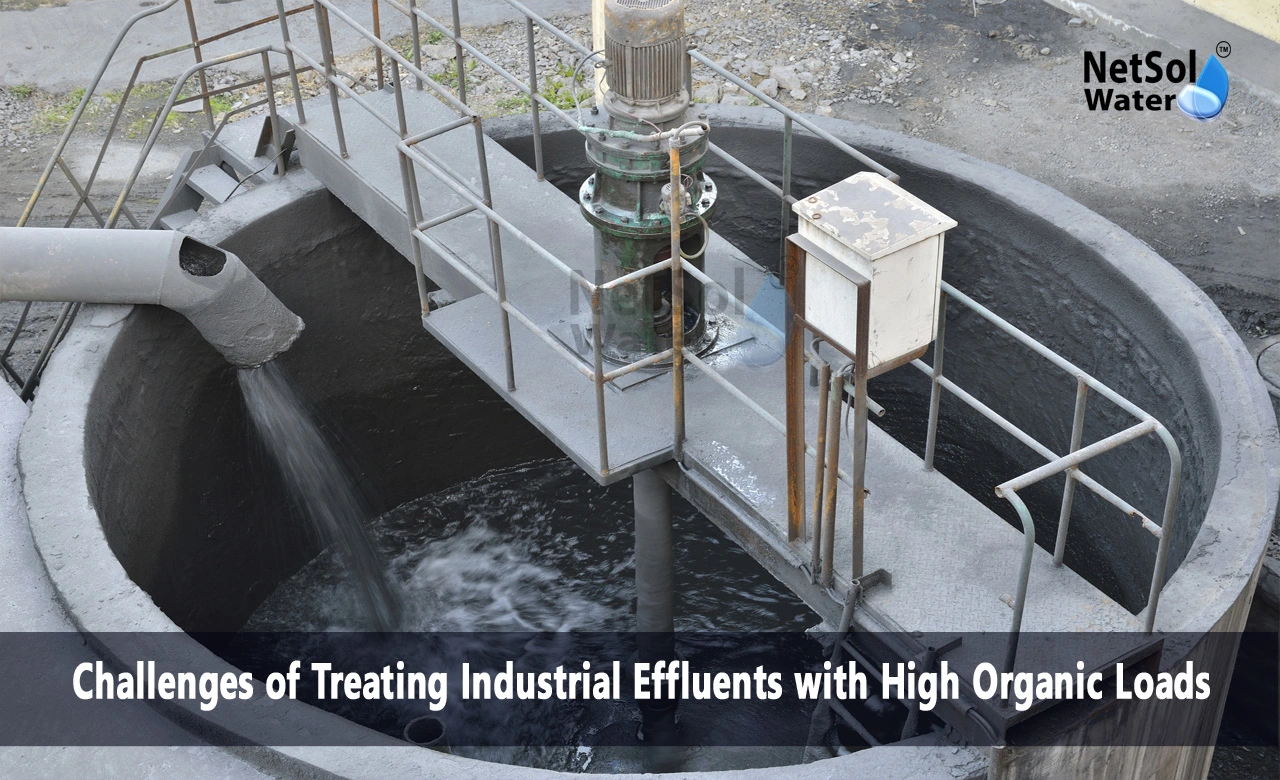Challenges of Treating Industrial Effluents with High Organic Loads
Many industrial sectors like food processing, breweries, pulp and paper mills, pharmaceuticals etc. generate effluents with extremely high organic loads measured as biochemical oxygen demand (BOD) and chemical oxygen demand (COD). Treating such concentrated waste streams poses unique challenges for conventional biological wastewater treatment plants designed for domestic sewage. This blog examines the key issues involved and strategies deployed to treat high-strength industrial effluents effectively.
Characteristics of High Organic Load Wastewaters
Industrial effluents with BOD/COD levels over 1000 mg/L are classified as high-strength compared to 200-400 mg/L ranges for domestic sewage. Such concentrated waste streams originate from:
· Food/Beverage Processing: Meat, dairy, brewery, and winery wastewaters with high proteins, sugars, and starches.
· Pulp/Paper Mills: Lignin, cellulose compounds from debarking, washing, and bleaching processes.
· Pharmaceutical Production: Solvents and reactants from synthesising drugs and active ingredients.
· Textile Finishing: Dyes, surfactants, and fixing agents from dyeing and printing operations.
Such extreme organic loads exert very high oxygen demands, rapidly depleting dissolved oxygen in receiving streams and leading to severe pollution impacts.
Inhibition Issues in Biological Treatment
While activated sludge is widely used for municipal sewage treatment, intense organic shocks pose operational challenges:
· Acclimatization Issues: Sudden organic load variations require slow acclimatisation periods for cultures to adapt before consistent removals.
· Bulking/Foaming: Filamentous bacteria outcompeting flocculators lead to poor settling, sludge bulking and foaming events.
· Toxic Metabolites: Formation of inhibitory byproducts during biodegradation, like sulfides, phenols, and ammonia, limits biological activity.
· pH/Temperature Swings: Extreme fluctuations in acidity, alkalinity, and temperatures inhibit bacterial functioning.
Such impacts severely affect biomass viability and treatment effectiveness, requiring extensive system monitoring and control measures.
Equalisation and Pretreatment Needs
Dampening hydraulic/organic load shocks is essential through appropriate equalisation basins, which provide detention times to even out peaks before biological treatment. Achieving consistent influent pH and temperatures through chemical/cooling adjustments may also be required.For recalcitrant, toxic organics, more extensive pretreatment through air stripping, coagulation/precipitation, and adsorption on activated carbon may be essential before biological steps. These multiple pretreatment stages add footprint requirements and operational complexities for treating industrial effluents.
Sludge Management Challenges
With significantly higher organic removals compared to municipal plants, industrial treatment generates much larger sludge volumes requiring appropriate handling:
· Digester Overloading: Excessively high sludge loads can hydraulically overload anaerobic digester fouling systems rapidly, requiring more frequent dewatering cycles.
· Dewatering Challenges: High solid contents and compressibility issues of industrial sludges impede effective dewatering, requiring specialised equipment.
· Disposal Restrictions: Stringent regulations around the land application of industrial residuals necessitate extensive stabilisation/treatment before disposal, adding to costs.
Overall, sludge management aspects are more intensive for industrial effluent treatment facilities, increasing overhead expenses.
Advanced Treatment Technologies
When conventional activated sludge systems remain inadequate, more advanced processes provide solutions:
· Membrane Bioreactors: Allow much higher MLSS concentrations, achieving better organic removals and tolerance in smaller footprints.
· Upflow Anaerobic Sludge Blankets: High-rate anaerobic digestion of soluble/semisolid organics generating biogas energy offsetting costs.
· Moving Bed Biofilm Reactors: Attached growth systems using media resisting biomass washout overcoming organic shock impacts.
· Oxidation Processes: Advanced chemical oxidation like ozonation, Fenton's reagent, etc., degrading recalcitrant organics missed by biotreatment.
Such intensified solutions while enabling discharge compliance involve higher energy and operational complexities, adding to treatment costs.
Energy Optimization Strategies
With higher organic and hydraulic loads, industrial treatment demands more intensive aeration/pumping, raising electricity consumption. Incorporating energy optimisation measures is crucial:
· Influent Segregation: Separating high/low-strength streams for appropriate treatment intensities, avoiding over-treatment.
· Anaerobic Pretreatment: Deploying upfront anaerobic steps generating biogas that can fuel heating/power operations.
· Process Air Optimization: Automated DO/nutrient controls minimising over-aeration without compromising organic removals.
· Energy Self-generation: Employing cogeneration, turbines or fuel cells to produce electricity/heat on-site through biogas valorisation.
Such steps lower the net energy footprint required, making industrial effluent treatment more economically viable.
Conclusion
Managing industrial effluents burdened with high organic loads measured as BOD/COD is a significant challenge requiring specialised treatment approaches beyond conventional sewage treatment methods. Key constraints around inhibitory effects on biomass, equalisation needs, excessive sludge generation, and energy intensity necessitate adopting intensified processes like MBRs, anaerobic reactors, and advanced oxidation, along with appropriate pretreatment steps. However, technologies allowing energy optimisation through biogas generation and resourceful sludge/byproduct management techniques improve the overall economics. As stringent environmental regulations incentivise pollutant discharge reductions, industrial facilities are increasingly incorporating tailor-made wastewater treatment solutions that integrate the latest innovations to remain competitive.
Netsol Water is Greater Noida-based leading water & wastewater treatment plant manufacturer. We are industry's most demanding company based on client review and work quality. We are known as best commercial RO plant manufacturers, industrial RO plant manufacturer, sewage treatment plant manufacturer, Water Softener Plant Manufacturers and effluent treatment plant manufacturers. Apart from this 24x7 customer support is our USP. Call on +91-9650608473, or write us at enquiry@netsolwater.com for any support, inquiry or product-purchase related query.



